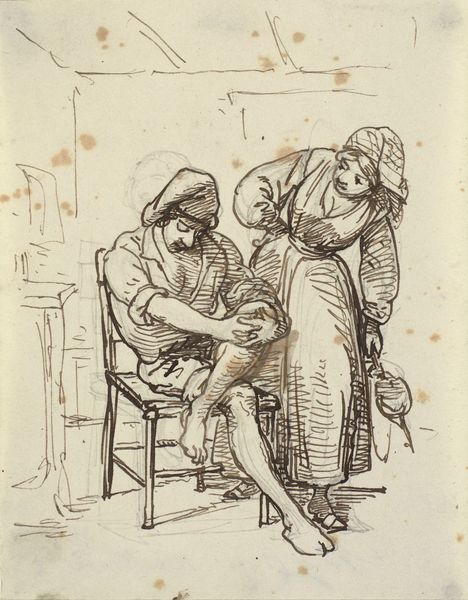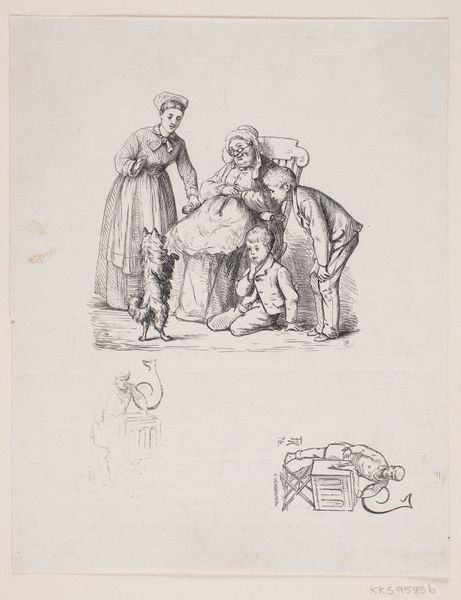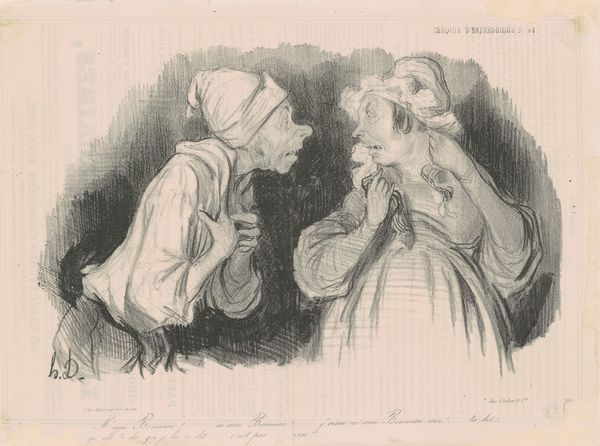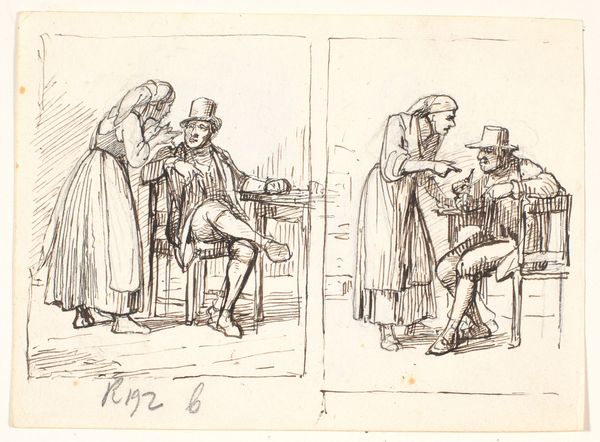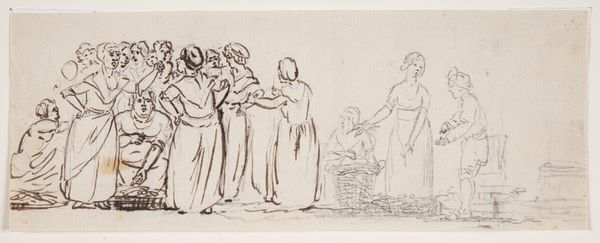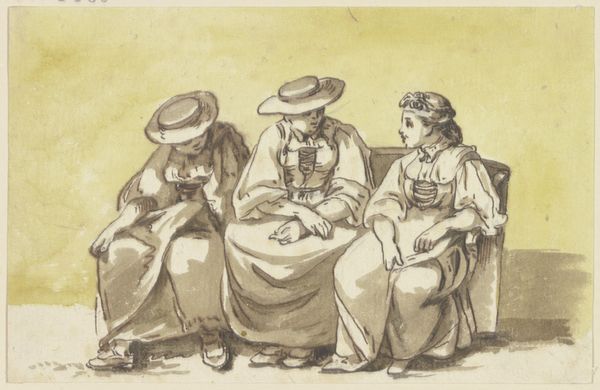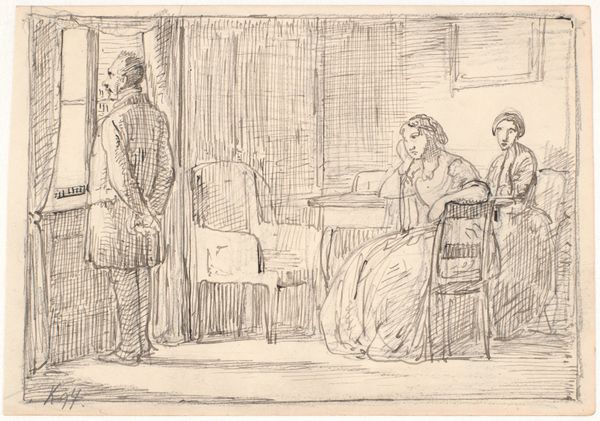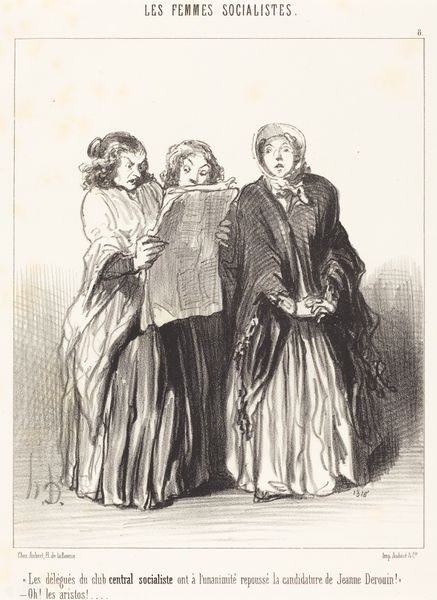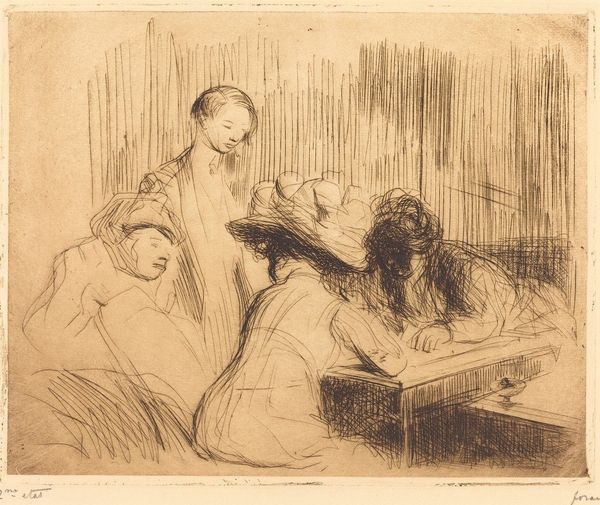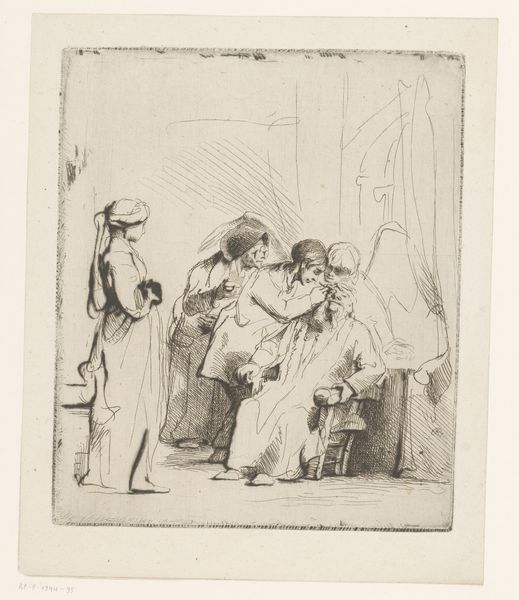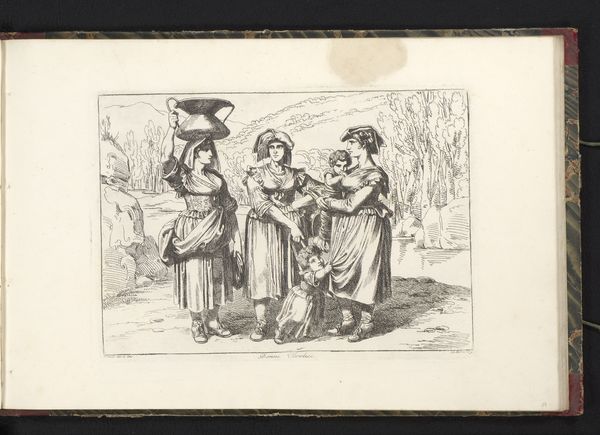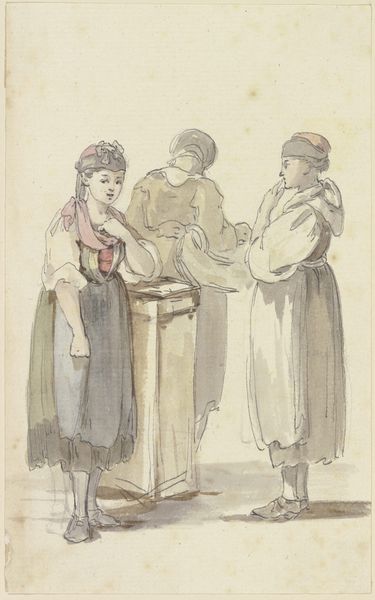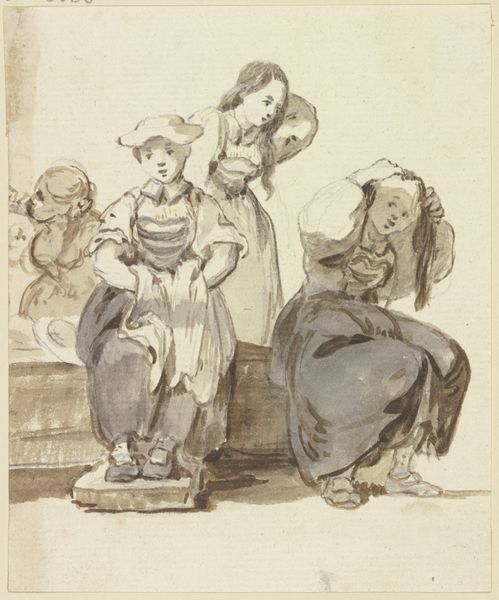
En gammel kvinde taler med en pater, t.v. ung kvinde 1840s
0:00
0:00
drawing, ink
#
portrait
#
drawing
#
ink
#
romanticism
#
genre-painting
Dimensions: 100 mm (height) x 137 mm (width) (bladmaal)
Curator: This is an ink drawing by Wilhelm Marstrand from the 1840s, titled "An Old Woman Talking to a Clergyman, Young Woman on the Left". Editor: My first impression is one of intimate intensity. The stark lines convey a hushed solemnity, heightened by the dramatic play of light and shadow. Curator: Absolutely. Marstrand masterfully captures the nuanced social dynamics at play. Note how the positioning of the characters implicates them in a wider conversation about women’s roles, social class, and the influence of the church in 19th-century life. The younger woman, standing apart, perhaps represents the emerging agency of women. Editor: I see it, though it’s also about the visual interplay of the lines. The dense cross-hatching on the clergyman and old woman versus the more delicate rendering of the young woman create a focal point and suggest differing weights of power and presence. What do you make of that? Curator: Exactly! It’s a potent statement. By juxtaposing the clergyman's assuredness with the young woman's apparent apprehension, Marstrand presents a commentary on female disempowerment in that era, suggesting their limited autonomy within the strict societal framework. And it also gestures to how those traditional sources of power are aging, represented by the 'old woman'. Editor: Still, it also intrigues me how Marstrand utilizes these relatively basic elements to create such complex character relations. I can observe an echo in each face from the hard edges of their clothes—as if even appearance holds internal, essential meaning. Curator: It's undeniable how art, even in a simple medium like ink, serves as a potent cultural record. These figures aren’t just aesthetically composed; they embody a wider range of gendered and socio-political realities. Editor: I agree—it really speaks to the expressive qualities of the drawing itself, and how, even absent color or detail, Marstrand communicates the subtle emotional fabric that binds and separates his characters. Curator: Through these characters we get insight into historical and social roles that continue to be negotiated even today. Editor: An exercise, indeed, in the lasting dialogue between the material and the human experience.
Comments
No comments
Be the first to comment and join the conversation on the ultimate creative platform.
